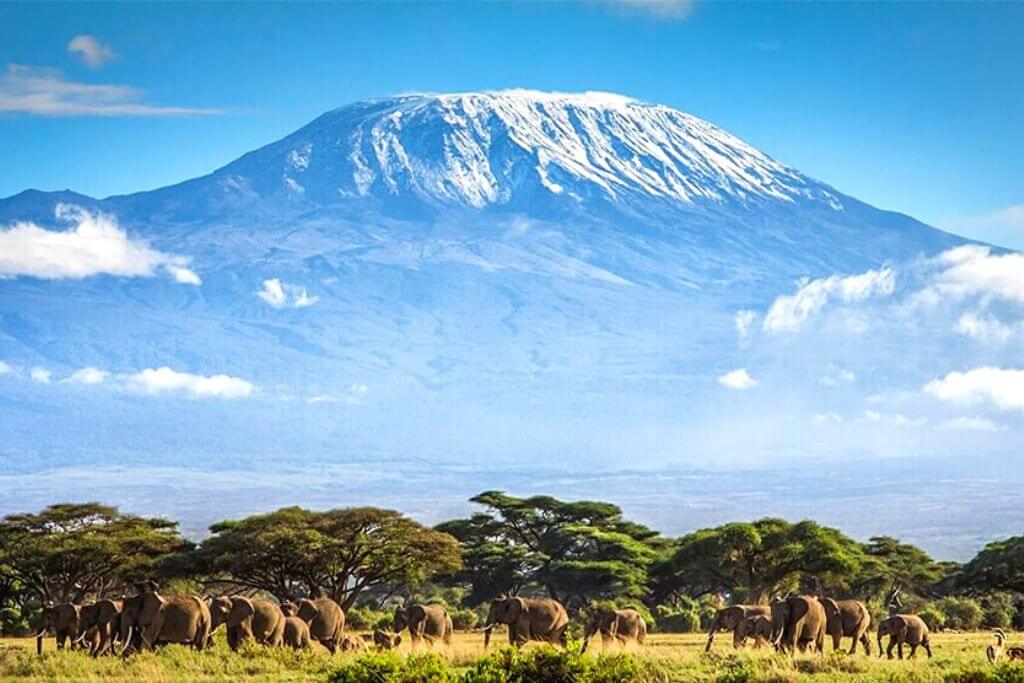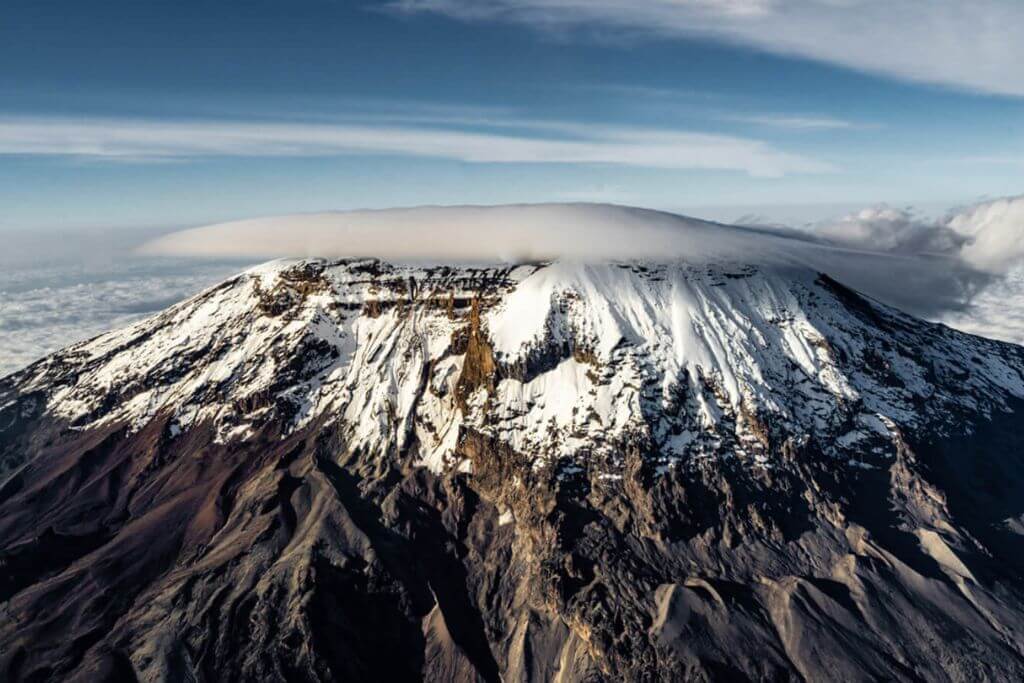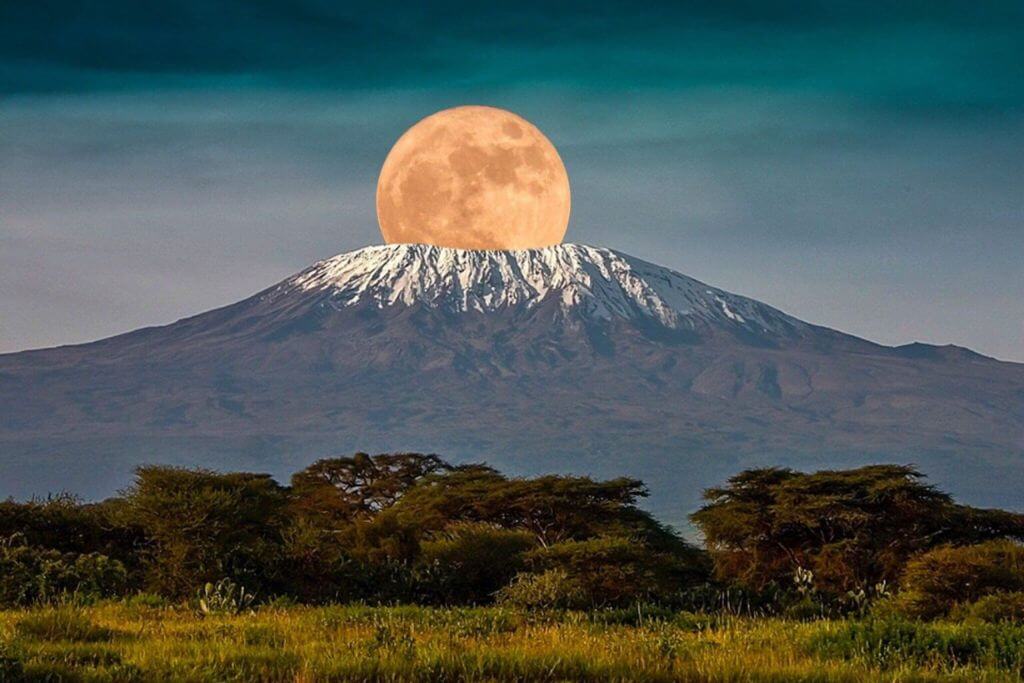A typical mountain is not Mount Kilimanjaro. It may claim to be the tallest peak in Africa as well as a number of other fascinating and unexpected things that you probably didn’t know!
1. One of the Seven Summits in the world is Mount Kilimanjaro.

The tallest peaks on each continent are together known as The Seven Summits. Height, geography, and climbing difficulties all vary widely among them. The Seven Summits are a goal for some people to hike. Others want to finish what is known as the Adventurer’s Grand Slam by travelling to both the North and South Poles.
Of the Seven Summits, Everest is undoubtedly the most well-known, with Kilimanjaro likely coming in second. As you can see, Mount Kilimanjaro is the fourth-highest of the Seven Summits.
2. Without climbing equipment, you can walk Mount Kilimanjaro.

The somewhat surprising fact that you don’t need any special gear or mountaineering expertise to climb Kilimanjaro adds to its allure. Yes, you can easily trek up to one of the highest peaks on Earth! For this reason, Mount Kilimanjaro is said to as a non-technical mountain. For many lower summits all around the planet, this isn’t the case. The remaining Seven Summits are all challenging mountains, even the lower ones.
There are several ways to reach Mount Kilimanjaro’s peak. No rock or glacier climbing is necessary to complete any of the seven regular routes to the peak or the most popular route down. In fact, the majority of the walk is hands-free, with the significant exception of the Barranco Wall.
3. The world’s tallest free-standing mountain is Mount Kilimanjaro.

Most of the highest mountains on earth are a component of massive mountain ranges. Mounts Denali and Kilimanjaro are two notable outliers since they are solitary mountains. However, Mount Kilimanjaro is recognized as the world’s tallest free-standing mountain. This is due to its prominence (or relative height) in relation to the surrounding terrain, which is an astounding 4,900 m.
You can see Mount Kilimanjaro from a great distance due to its remote location and astounding prominence. On clear days, these same qualities also allow you to enjoy such breathtakingly far-reaching vistas from the top.
The prominence of Mount Kilimanjaro is 4,900 meters. In contrast, Table Mountain in Cape Town has a prominence of just 1,055 m.
4. A volcano, Mount Kilimanjaro, has three cones.

The fact that Mount Kilimanjaro is a volcano is not well known. Specifically, one that is inactive. More people also don’t know that it contains three volcanic cones. This indicates that over its existence, it has vented through three separate holes. Kilimanjaro’s cones are:
- Kibo, 5,895 m (19,341 ft) – dormant
- Mawenzi, 5,149 m (16,893 ft) – extinct
- Shira, 3,962 m (13,000 ft) – extinct
Because Kibo was the cone that last vented, it is the tallest on Mount Kilimanjaro. But because it happened so long ago, no one can pinpoint the exact date.
Like all volcanic cones, none of Mount Kilimanjaro’s cones has a neat, tapered tip at the top; instead, they all have a crater or depression. When you climb Mount Kilimanjaro, you’re really climbing Uhuru Peak, the highest point on the rim of Kibo Crater.
5. Kilimanjaro’s ascent is comparable to travelling from the equator to the Arctic.

Mount Kilimanjaro is located in a hot location because Tanzania is located close to the equator. The mountain’s summit, however, is a harsh place covered with snow, ice, and extremely low temperatures.
In order to reach the mountain’s top at 5,895 m, one must ascend from the mountain’s base, which is around 1,000 m above sea level, through an arctic climate. This is the reason why people frequently compare climbing Kilimanjaro to walking from the Equator to the North Pole.
Clearly, there is a gradual transition from a tropical base to an icy summit. Actually, there are five overlapping biological and climatic bands on Mount Kilimanjaro. From lowest to highest, they are:
- Cultivated band (800 m to 1,800 m)
- Rainforest band (1,800 m to 2,800 m)
- Afro-alpine moorland band (2,800 m to 4,000 m)
- Alpine desert band (4,000 m to 5,000 m)
- Arctic summit (above 5,000 m)
6. Only 50% of climbers make it to the top.

Only 45% of climbers who attempt to summit Kilimanjaro each year really succeed, according to a 2006 assessment by Kilimanjaro National Park. Most of this is attributable to altitude sickness. This alarming statistic highlights the significance of selecting a longer Kilimanjaro route that allows for adequate acclimatization.
Much better Mountaineers who took seven-day routes completed 64% of the climb.
Up to 85% of climbers using eight-day routes succeeded in reaching the summit.
Eight-day climbers had a summit success rate of 85%, which is significantly higher than the national average.
The nine-day Northern Circuit route was not the subject of data collection by the park, but we are aware from personal experience that it has a very high success rate.
7. At the peak, painted wolves were visible.

At Kilimanjaro’s summit in 1962, a group of painted wolves was observed! Being a hostile environment, the icy world of Kilimanjaro’s peak is very, very rarely visited by any species. Although Kilimanjaro National Park is home to a few painted wolves, can you imagine the trekkers’ shock when they spotted some near the summit?
Did you know, incidentally, that the painted wolf goes by about ten distinct names? They include hyena dogs, wild dogs, African wild dogs, Cape hunting dogs, ornate wolves, and other combinations of those names. The Latin name for the species, lycaon pictus, which translates to “painted wolf-like animal,” is where the term “painted wolf” originates.
The finding of a frozen leopard on the crater rim in 1926 was equally unexpected as the sighting of painted wolves.
8. Only in the forest of Kilimanjaro does a lovely flower blossom.

The impressive lower Kilimanjaro rainforest is the only area on earth where the vigorous perennial Kilimanjaro impatiens (impatiens kilimanjari) may be found.
This tiny, colourful blossom is huge on impact despite its diminutive size. The base of its pinkish-red blossoms, which curve like a prawn’s tail, mellows into yellow. Additionally, its pollen and stamens are purple, as if that weren’t magnificent enough! The plant’s broad, serrated leaves are a lovely deep green as well.
When you’re one day trekking in the bush on a Kilimanjaro hike, be sure to keep an eye out for Kilimanjaro impatiens in such areas. It prefers a little dampness, filtered sun, or bright shade.
9. The vegetation of the mountain’s moorland is strange.

The Afro-alpine moorland band of Mount Kilimanjaro (located between 2,800 and 4,000 m) is undoubtedly the most fascinating of the mountain’s five climate zones. Its lush, frequently mist-covered greenery is quite stunning.
10. The origin of the name Kilimanjaro is unknown.

It is asserted that the name means “mountain of greatness” or “mountain of whiteness” and originates from one or more of the regional tongues (including Swahili, Kamba, and Chagga). But none of the roughly a dozen conjectures can be supported by enough solid evidence. However, we are aware of the precise origin of the mountain’s current name for its peak.
The name Uhuru Peak was given to Mount Kilimanjaro’s summit in 1964. Its previous name, Kaiser Wilhelm Spitze (Peak), was given to the peak when it was a part of German East Africa. But in the 1960s, when Tanzania became independent, it was given the new name Uhuru Peak, which translates to “freedom peak.”
